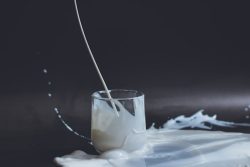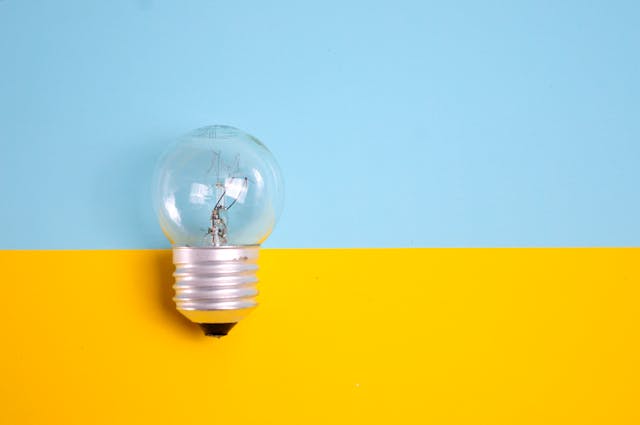I was at my medical provider the other day waiting for my turn for an MRI test. I shared the lobby with over 100 people. As I looked around, for the first time I noticed something odd. About 80% of the people in the lobby were overweight. I found a seat, the only seat. It was a single small seat. Most of the seats now are double sized to allow the obese to sit. I am claustrophobic and was concerned about this on my way to the MRI machine. The nurse gave me a wink and smile and we walked into the room. I was nailed to the floor. I have never seen anything like this though I have been in MRIs many times before.
I recall having been pushed into a narrow tube many times before where I could not lift a hand, usually dimly lit with some wind blowing in my face and a terribly loud echoing hammering as the image slices were taken. Yet here I was, glided silently into an MRI machine that was almost big enough for me to sit up in. “Ah the benefits of having obese people” I thought as I entered this brightly lit giant tube that was so wide that even the noise was reduced, lacking the echo we all are familiar with and hate. The radiologist told me that all MRI scanners are being replaced. As I was scanned for 45 minutes, I had no claustrophobia at all and not too much noise to block my thinking. The time gave me a chance to pause about the obesity epidemic: how did we get here? Why are entire new industries created to cater to our new weight rather than help us become healthy? Why are so many of us overweight to begin with? What has gone wrong?
Coincidentally, for unrelated reasons, I was already researching the nutritional recommendations of the USDA for the past several months; reading all of the books and academic research papers available to me. The USDA recommendations sparked my interest because I run a migraine group full of glucose intolerant migraineurs. I merely wanted an answer to why migraineurs (like me) are glucose intolerant, when I came across the huge nutritional boxing ring with major academic fights in this arena. The real science was hid, even by the NIH, unpublished.
The obesity epidemic starts with the theory of Ancel Keys who in the mid 20th Century US decided that coronary heart disease (CHD) was the most important thing to focus on (Eisenhower just had a heart attack). He found support for his hypothesis that high cholesterol is caused by high dietary fat—in particular saturated animal fats—and those with high cholesterol will most certainly have CHD, will flip and die very soon. His findings were dubious at best, but still garnered support (Ancel Keys – Seven Countries Study).
Researchers all over the world presented conflicting evidence but they were not only not able to publish these data in reputable academic journals, they were ostracized for even trying. Eventually so many scientists lost their reputation as a result of trying to fight Keys’ hypothesis that many left academia or changed fields of research and gave up (1-3).
Nina Teicholz spent eight years digging up files never published and hidden in the archives of the NIH (3). The reason for not publishing? The findings did not support Keys’ theories. It was assumed that the results had to have been wrong and therefore could not be published. In scientific research the role of science is to try to refute the theory by proving it wrong. In the case of Keys’ theory, the law of science changed: a theory was accepted as truth and no one could publish anything unless they found supporting evidence to THAT theory. Thus, science moved backwards and has effectively stalled for decades where cholesterol and fat are concerned.
When nutrition research began in the early 20th Century, we did not have the all of the tools available that we have today. Today we know that cholesterol is not made from fat at all but from Acetyl CoA and Acetoacetyl CoA (source). So if cholesterol is not made from fat, what is the connection of eating saturated fat to CHD? Nothing actually—today we know but shhhhh… this still cannot be said loud!
Cholesterol Is Made From Acetyl CoA and Acetoacetyl CoA, Not Fat
Cholesterol is made from two molecules in a total of about 39 hard steps by our liver (or we can eat it like egg yolks). Would our body go through such hard work of creating something if it ended up causing our death? It is not even plausible that human evolution would have supported such counter mechanism.
A Primer on Metabolism
Acetyl CoA is
an important biochemical molecule in cellular respiration. It is produced in the second step of aerobic respiration after glycolysis [the breakdown of glucose (think carbohydrates) by enzymes, releasing energy and pyruvic acid] and carries the carbon atoms of the acetyl group to the TCA cycle [Krebs cycle which is a chemical reaction used by all aerobic organisms] to be oxidized for energy production (source).
and Acetoacetyl CoA is
intermediate in the oxidation of fatty acids [fats] and in the formation of ketone bodies [fat burning energy bodies] (source).
Note that neither is a fat but they together form fat (cholesterol) by oxidation. Cholesterol is a lipid (a naturally occurring molecule like fats, waxes, steroids, fat-soluble vitamins like vitamins A, D, E, and K, and also triglycerides). Triglycerides are ester derived from glycerol and three fatty acids – body fat, phospholipids (a major component of all cell membranes), and many other types of lipids. The main biological functions of lipids (such as cholesterol) are storing energy, signaling, and acting as structural components of cell membranes.
It is not the matter of eating fat and oops we now have cholesterol; rather it is a matter of “we must have cholesterol to survive.”
Where do these elements come from in the body to create cholesterol?
As noted above: carbohydrates (glucose is a carbohydrate) and an element that is an intermediate step in oxidizing fatty acid combined create cholesterol, which “then enters the citric acid cycle in the mitochondria…” (source) Note the key word here: carbohydrates. This is important because the “health-heart” movement of Ancel Keys’ “fat causes high cholesterol” is clearly not true if cholesterol is made from carbohydrates and not a fat. How did we end up thinking that cholesterol is made from fat? It certainly is fat but clearly is not made from fat.
Why do we need cholesterol?
Cholesterol is used by our mitochondria (not what we eat but what our mitochondria needs to create energy ATP). (source)
How much cholesterol is needed and what happens when we reduce cholesterol?
You would think that these questions were asked over the 80+ years but no reputable scientist dared asking. The moment such question was asked, the sticker “black sheep” went up the forehead so researchers just let it go. Thus we have no idea how much cholesterol we actually need. Everyone needs a different level: the thought that a 30-year old 7-foot-tall male Marathon runner needs the same cholesterol level as a little old lady, aged 95, in a wheelchair is just preposterous. Clearly each person needs a different level based on mitochondrial respiration intensity and frequency, which is age, gender, and activity related. A cookie-cutter approach just cannot work. What happens when we reduce cholesterol? As noted above, cholesterol stores energy, it is a signaling agent, and acts as structural components of cell membranes among other things. If we reduce cholesterol, we effectively reduce our body functions.
The Combustible Vegetable Oils
Since it was decided that fat creates cholesterol and thus saturated fats had to be removed from everyone’s diet, the research was about how to make vegetable oils, unsaturated or polyunsaturated, edible and digestible (the kind flies won’t eat in your garage). Hydrogenation could only produce dangerous fats, such as hydrogenated vegetable oils (trans fats) or partially hydrogenated vegetable oils, both of which were said to have randomly combusted in delivery trucks while being taken for cleaning and also while taken back to the restaurants after cleaning. Apparently the fumes vegetable oils create settle in the clothing (and the lungs of the chefs) and even after professional cleaning are still capable to burst into flame without any provocation (3). These vegetable oils have polyunsaturated fats that have the unfortunate “poly” (multiple) bonds. These bonds break easily, transforming fats into ugly sticky goo and free radicals. This goo replaces animal fats in human mitochondria, blocking the mitochondria from creating energy.
This makes a lot of sense: fats in vegetable oils are not the same chemical components as fats in animal bodies. There is a huge difference in how they work and to what they bond. Animal fats become energized by thermal heat referred to as internal combustion whereas vegetables use external energy (the sun) and in heat they disintegrate, oxidize, and become goo. They chemically change from being fats to something that cannot be used by the human body as fats (4). Olive oil does not combust but at higher temperatures oxidize, creating free radicals.
Fat provides a lot of energy, 9 Calories per gram as opposed to carbohydrates and proteins, each producing only 4 Calories per gram. This implies that by removing fat calories from our diet, a very large part of the daily calories needed to be made up by something other than fat. Since protein also contained fat (saturated fat in particular), the Food Pyramid and later “My Plate” both reduced the protein amount as well. Thus, what we were left with was increased carbohydrates in our diets. However, as noted above, carbohydrates are part of cholesterol creation. This has become a catch 22 that no one in the “heart-health” supporter group accepted or did not see or decided to ignore because it was too complex or decided to ignore because then they too would become black sheep.
The Catch 22
Perhaps most the most striking aspect of this misunderstanding, is that if we follow the steps, we inadvertently increase the very diseases that we would like to avoid. By increasing carbohydrate intake, we’re increasing cholesterol and inducing metabolic disorders.
reduce cholesterol ==> reduce fats ==> increase carbohydrates ==> increase cholesterol
So here we are today, 80+ years later. Today the Western Diet world has a nightmare of metabolic disorders to fight. Where do metabolic disorder lead to? CHD of course, the very thing Ancel Keys wanted to rid the society from. However, there is more to it than that.
Carbohydrates have some nasty properties—both simple and complex carbohydrates do:
- They are addictive; eight times more than cocaine or heroin (5, 6)
- Grains (complex carbohydrates we eat the most of) release morphine (7), another drug
- Carbohydrates spike insulin and create insulin resistance (8-10)
- Insulin in the blood makes us hungry
- The more carbohydrates we eat, the more insulin we release and the hungrier we get
- Insulin resistance turns into type 2 diabetes
- People with type 2 diabetes are at an increased risk of CHD
- Carbohydrates create triglycerides, the type of cholesterol that is know to cause CHD (11)
And so now not only are we back at trying to prevent CHD, where we started 80+ years ago, but we also have massive metabolic disorder epidemic and new diseases, such as cancer, that also appear to be connected to high carbohydrate consumption.
Yet, to this day, the nutrition guideline of the USDA for the American population, now called My Plate, does not even include dietary fat! I challenge you to find a baby food with more than 1% fat in it; babies are only eating carbohydrates.
Luckily there is a new movement toward a healthy diet that goes under a couple of different names: Low Carbohydrate High Fat (LCHF) or ketogenic diet. These types of diets are used now therapeutically for many health conditions; health conditions we could probably prevent if we simply added saturated animal fats back into our diet and dumped all that sugar and grain.
Sources
- Taubes G (2008) Good Calories, Bad Calories: Fats, Carbs, and the Controversial Science of Diet and Health (Anchor).
- Taubes G (2011) Why We Get Fat: And What to Do About It (Anchor) Reprint edition December 27, 2011 Ed p 288.
- Teicholz N (2015) The Big Fat Surprise: Why Butter, Meat and Cheese Belong in a Healthy Diet (Simon & Schuster; Reprint edition, New York) p 496.
- Browner WS, Westenhouse J, & Tice JA (1991) What if americans ate less fat?: A quantitative estimate of the effect on mortality. JAMA 265(24):3285-3291.
- Ahmed SH, Guillem K, & Vandaele Y (2013) Sugar addiction: pushing the drug-sugar analogy to the limit. Current Opinion in Clinical Nutrition & Metabolic Care 16(4):434-439.
- Lenoir M, Serre F, Cantin L, & Ahmed SH (2007) Intense Sweetness Surpasses Cocaine Reward. PLoS ONE 2(8):e698.
- Perlmutter D & Loberg K (2014) Grain Brain: The Surprising Truth About Wheat, Carbs, and Sugar – Your Brain’s Silent Killers (Hodder & Stoughton).
- DiNicolantonio JJ & Lucan SC (2014) The wrong white crystals: not salt but sugar as aetiological in hypertension and cardiometabolic disease. Open Heart 1(1):e000167.
- Schaefer EJ, Gleason JA, & Dansinger ML (2009) Dietary Fructose and Glucose Differentially Affect Lipid and Glucose Homeostasis. The Journal of Nutrition 139(6):1257S-1262S.
- Stanhope KL (2015) Sugar consumption, metabolic disease and obesity: The state of the controversy. Critical Reviews in Clinical Laboratory Sciences:1-16.
- Gandotra P & Miller M (2008) The role of triglycerides in cardiovascular risk. Current Cardiology Reports 10(6):505-511.
Graphic credit: You shall be obese (picture ©Angela A. Stanton, Ph.D.)
We Need Your Help
More people than ever are reading Hormones Matter, a testament to the need for independent voices in health and medicine. We are not funded and accept limited advertising. Unlike many health sites, we don’t force you to purchase a subscription. We believe health information should be open to all. If you read Hormones Matter, like it, please help support it. Contribute now.
Yes, I would like to support Hormones Matter.
This article was published originally on August 8, 2016.















